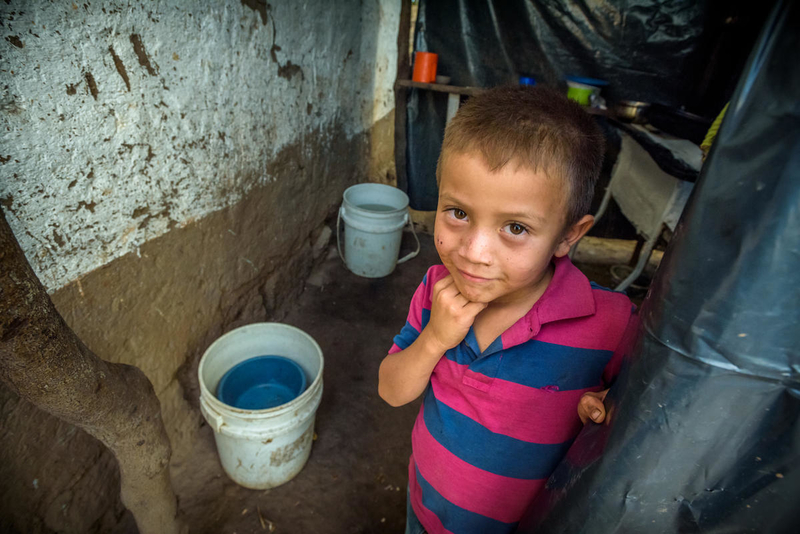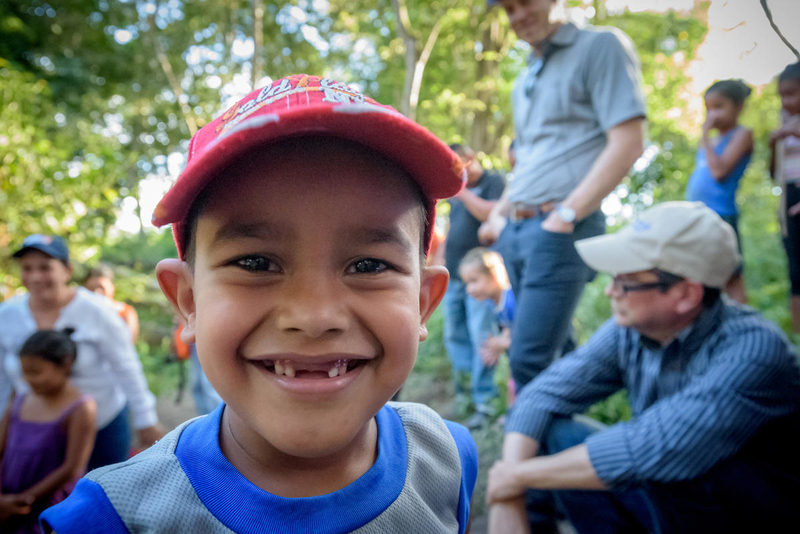“The King will reply, ‘Truly I tell you, whatever you did for one of the least of these brothers and sisters of mine, you did for me.’” — Matthew 25:40
There seems to be weekly news regarding more migrants choosing to make the dangerous journey north to the U.S. in hopes of finding a better future for themselves and their families. Many of these migrants are children, making their way to our southern border with little more than the clothes on their backs and assuming the risk of possible violence and exploitation that may await them on the road.
World Vision continues to focus on addressing the root causes of migration that have spurred these children, alone or with their families, to migrate. But for any unaccompanied minors that come to the U.S., their protection, well-being, and development must remain paramount in our policy decisions.
Read on to understand why children on the move are so vulnerable to violence and exploitation, what can be done to protect them here and in their home countries, and how YOU can help.
Why are children on the move so vulnerable?
It is certainly troubling and frustrating to see more parents and guardians sending their children on this journey north, and in some cases, adolescents making that decision for themselves. But earlier this year, I traveled to El Salvador and saw first-hand the poverty and violence that many in Central America endure. It is heartbreaking to see the realities these children are fleeing and the desperation for a better life.
What’s happening at the border?
Unfortunately, much of the news surrounding these young people that have come to our borders has centered on difficult shelter conditions, the failings of our government to provide appropriate care, and most recently, the decision to cut education, recreation, and legal services for those minors who are in the custody of government shelters. This news came just days after it was revealed that many minors are also remaining in Border Patrol custody for far longer than the 72 hours allowed by law.
So how do we focus on children’s well-being as the priority during a complex and overwhelming surge of migrants from Central America? This starts with a recognition that the children making this journey on their own are the most vulnerable among us and deserving of our respect, protection, and care. This includes an understanding of the emotional and developmental harm inflicted when they are separated from their families, their education is paused, or they are denied other services.
- Cutting recreational activities only leads to further isolation for children already separated from their families, leading to a lasting effect on their health and well-being.
- Lack of education further disrupts children’s development, which was likely already hampered by the circumstances they fled and the long, dangerous journey to the U.S. border.
- Denying English classes puts these children further behind and makes transitioning to permanent care once placed with a sponsor (often a family member residing in the U.S.) even more difficult.
- By eliminating legal services for these unaccompanied minors, they are stripped of their advocate, making it extremely difficult for them to legally defend themselves from deportation. This deportation has the potential to send them right back to the violence and poverty from which they fled. This leaves them with the decision to try and make that risky trip again, or to remain in the difficult situations of their home countries. But World Vision provides a third option.

Young boy in Honduras. His community will receive clean water through World Vision programming. (©2018 World Vision/photo by Jon Warren)
What is World Vision doing to help children on the move?
Through World Vision’s security and livelihood programs, we are focusing on addressing the root causes of this surge in migration like violence, poverty, and lack of opportunity. The programs of our Hope at Home intervention framework focus on empowering youth by equipping them with life skills, improving access to education and employment, and improving overall quality of life.
For example, through our Community Roots Project in Guatemala, funded by the U.S. government, youth participate in the arts and express their creativity and imagination while taking part in educational and life skills sessions. One session featured a brief presentation on the dangers and implications of traveling illegally to the United States. One young participant, Isidoro Ramirez, wanted to cross the border in search of the “American dream”. But after participating in the project, he changed his mind:
“Without a doubt, the Community Roots Project presentation on migration made me really think twice about my decision. I even try to discourage my friends from migrating now. Many of them think the way I used to but with the activities we’ve been doing with the Project, I can see that there are opportunities right here in Guatemala. I know clearly that there is still much development needed in my community, but I want to be a part of that change.”
This project has also developed 79 violence prevention commissions that have been trained to promote violence and migration prevention initiatives. And we’re seeing results: A mayor of one of the municipalities where the project has been implemented said, “With the support we’ve received from the Community Roots Project, we have seen a change in our municipality. Proof of this is that no homicides have been reported in the past 40 days, a huge milestone for this municipality.”
In Honduras, the U.S. government funded Futuros Brilliantes project reduces child labor through a multilateral approach in which children who are at risk for labor are assisted through their community with support that allows them to return to school. This support includes 28 alternative education training programs. As a result, we’ve seen the rate of child labor nearly cut in half since starting the program (60% to 35%).
These programs are working. By addressing these root causes we can come alongside communities and help them stabilize and provide more opportunities for their citizens. Programs like these are the sustainable, long-term solution that will give youths hope for a better future in their home country.

Protecting children wherever they are
But when vulnerable children still make their way to our southern border, we must keep their safety and well-being at the focus of our policy decisions. These young people are children of God, and we should do all that we can to facilitate each one in reaching their God-given potential. The lack of resources to provide these necessary services, or keeping these children at border detention facilities beyond the legal limit, only creates road blocks for their future in an already difficult situation.
Remember when I said that YOU can help these children? I ask that you use your voice. Please consider reaching out to your Representative and Senators, or to the White House directly, and raise your concern regarding the well-being of these vulnerable children and the recent cuts in services that put them at risk.
Additionally, you can also ask your Member of Congress to support H.R. 2615, the United States-Northern Triangle Enhanced Engagement Act. This bill would provide more resources for the U.S. government to provide assistance to organizations like World Vision working in Central America that address the root causes of migration, mitigating the desire for these children to leave their home countries.
While these children may no longer have a legal advocate, we can be their voice and advocate for the reinstatement of these vital services and more resources to address the root causes of migration.
*Update: H.R. 2615 passed unanimously in the House of Representatives on July 15. Now, take a moment to ask Congress to protect foreign assistance!
ACT NOW:
Top photo: Young boy in Honduras. (©2018 World Vision/photo by Jon Warren)



One Comment